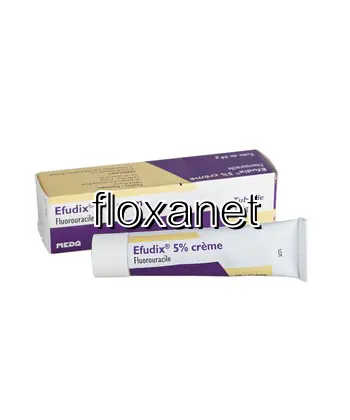| Package | Dosage | Price | Price per Dose | |
|---|---|---|---|---|
| Dosage: 1% | ||||
| 5 tube | 1% | $70.77 | $14.16 | |
| 4 tube | 1% | $66.61 | $16.66 | |
| 3 tube | 1% | $58.28 | $19.43 | |
| 2 tube | 1% | $44.40 | $22.19 | |
| Dosage: 5% | ||||
| 5 tube | 5% | $173.49 | $34.70 | |
| 4 tube | 5% | $149.89 | $37.48 | |
| 3 tube | 5% | $124.91 | $41.64 | |
| 2 tube | 5% | $97.15 | $48.57 | |

Fluorouracil Description
Overview of Fluorouracil
Fluorouracil, often referred to as 5-FU, is a widely used chemotherapy medication primarily employed in the treatment of various cancers. It belongs to the class of drugs known as antimetabolites, which work by interfering with the natural substances within cancer cells, thereby inhibiting their growth and multiplication. This medication has been a cornerstone in cancer therapy for decades, especially in treating cancers of the colon, rectum, breast, stomach, and sometimes in skin cancers when used topically.
How Fluorouracil Works
Fluorouracil functions by mimicking the natural nucleotide uracil, which is essential for DNA and RNA synthesis. When administered, it integrates into the genetic material of rapidly dividing cancer cells. This integration disrupts the synthesis process, leading to cell death. Because cancer cells divide at a faster rate than most normal cells, they are more susceptible to the effects of fluorouracil, making it an effective chemotherapeutic agent. However, this mechanism also means that some normal cells, especially those that divide rapidly such as cells of the lining of the mouth, gastrointestinal tract, and hair follicles, can be affected, leading to side effects.
Formulations and Usage
Fluorouracil is available in various forms depending on the type of cancer being treated. It is most commonly administered as an injection in hospital or clinic settings. For skin cancers and certain dermatological conditions, it is also used topically as a cream or solution. The dosage and treatment schedule are carefully determined by a healthcare professional, considering factors such as the patient’s overall health, type and stage of cancer, and response to therapy. It is crucial to follow the prescribed regimen precisely to maximize effectiveness and minimize adverse effects.
Effectiveness and Benefits
Many patients have experienced significant benefits from fluorouracil therapy. It has remarkable efficacy in shrinking tumors, prolonging survival rates, and sometimes achieving remission. When used as part of combination therapy, its effectiveness can be further enhanced. The medication is especially valued for its ability to target cancer cells while sparing some normal tissues, though side effects can still occur. Its long-standing use in medical practice underscores its importance in oncology. Patients often appreciate the drug's proven track record and generally tolerable profile when managed correctly by healthcare providers.
Common Side Effects and Precautions
While fluorouracil can be highly effective, it is not without side effects. Common reactions include mouth sores, nausea, vomiting, diarrhea, and fatigue. Some patients experience lowered blood cell counts, which can increase the risk of infections and bleeding. Skin reactions, such as redness and irritation, are common with topical formulations. Serious but less frequent adverse effects include allergic reactions, cardiac issues, or severe gastrointestinal toxicity. Due to these potential issues, patients are closely monitored during treatment. It is essential to communicate any unusual symptoms to a doctor promptly.
Consultation and Monitoring
Before beginning fluorouracil therapy, a thorough medical evaluation is necessary. This includes blood tests and assessment of liver and kidney function. Throughout treatment, regular monitoring helps detect any toxicities early and adjust doses accordingly. Patients are advised to avoid live vaccines, inform their healthcare providers of all medications they are taking, and discuss any pre-existing conditions. Proper management and adherence to medical guidance can significantly improve treatment outcomes and reduce risks associated with the drug.
Summary
In summary, fluorouracil remains a vital element in cancer treatment due to its proven efficacy and long history of use. It works by disrupting DNA and RNA synthesis in rapidly dividing cells, which makes it effective against various cancers. Despite its benefits, careful management is required to minimize side effects and ensure safety. Patients considering fluorouracil therapy should always do so under medical supervision, adhering strictly to prescribed protocols to maximize benefits and reduce risks. Its role in oncology continues to be significant, especially as ongoing research explores ways to improve its efficacy and reduce adverse effects.
